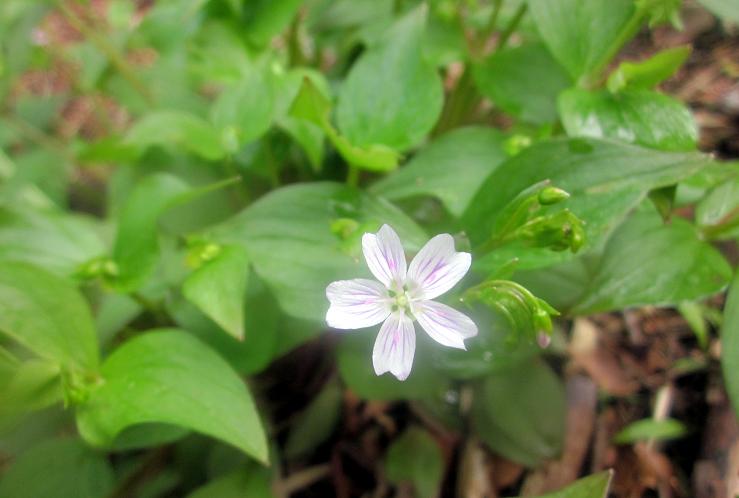 It’s May and the green belt behind our house is just that. Green! A chlorophyll wonderland of shimmering leaves, budding tree branches and ferns studded with tiny little purple flowers that I can’t identify but look so freakin cute! Viewed from my kitchen window the scene overwhelms the senses. So much is growing and moving. So much is green! My eyes focus and unfocus wildly, trying hopelessly to impose some order on all this chaos, this emerald leviathan, this explosion of life.
It’s May and the green belt behind our house is just that. Green! A chlorophyll wonderland of shimmering leaves, budding tree branches and ferns studded with tiny little purple flowers that I can’t identify but look so freakin cute! Viewed from my kitchen window the scene overwhelms the senses. So much is growing and moving. So much is green! My eyes focus and unfocus wildly, trying hopelessly to impose some order on all this chaos, this emerald leviathan, this explosion of life.
And the edibles! Dandelions, fiddleheads, salmonberry shoots, nettles and everything else I’ve been gushing about for the last three or four posts. It’s a forager’s paradise! And now, I can add Miner’s Lettuce (aka: Indian Lettuce, Winter Purslane and Spring Beauty) to my growing list of spring pickings.
Miner’s lettuce is one plant that I’d left off the foraging list ‘till very recently for reasons that will become pathetically obvious. *laughs* It’s a beautiful and little known weed that (of course) I’d been introduced to by Obi-Wan-Toni.
Last May she made a casual comment to the effect of, “Oh yeah, this is called Miner’s Lettuce! It’s awesome and everywhere! It looks like this… This… And this.” I nodded, vaguely comprehending while she pointed out the plant and some of its key features. I was trying to cram as much of Toni’s wildlore into my skull as I could. But there were nettles to be picked, and beers to drink and… Well, when I got around to picking miner’s lettuce this year… I wasn’t all that certain that I had the right plant.
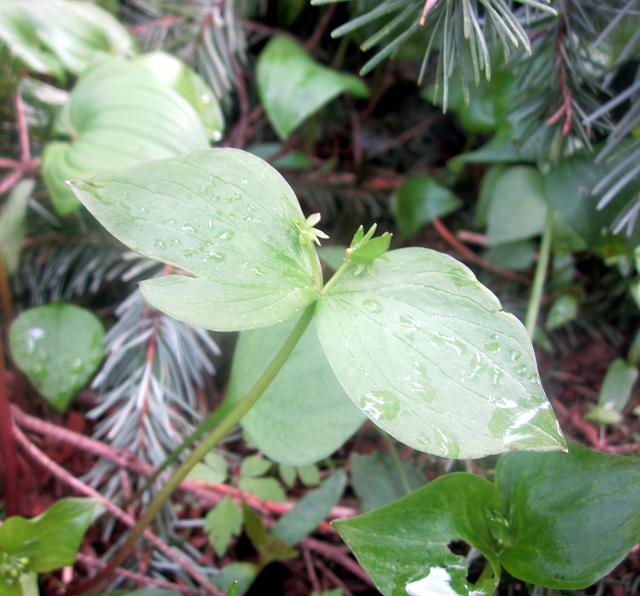 Y’see, if you Google “Miner’s Lettuce” (go ahead and try it… No, it’s cool, I’ll be here when you get back) you get a lot of pictures of a plant that looks like the one in front of me, but not quite. There are some subtle differences:
Y’see, if you Google “Miner’s Lettuce” (go ahead and try it… No, it’s cool, I’ll be here when you get back) you get a lot of pictures of a plant that looks like the one in front of me, but not quite. There are some subtle differences:
- The stems that make up the rosette are bright green on the interwebs, and my stems are reddish, purple at the base.
- The shape of the leaves on all the foraging blogs are referred to as “spade-shaped”, while these ones are definitely more “diamond-shaped”.
- The pictures online show a topmost pair of leaves that become one single circular (perfoliate) leaf under the flower, but I’ve got a distinct pair ‘o leaves.
Could Toni have pointed out the wrong plant, or was I just paying poor attention to what she said? She called it miner’s lettuce didn’t she? Yeah, that I’m sure about. It’s just that these pictures online (and even in some foraging books I have) seem different, and eating “different”-looking plants can make people sick.
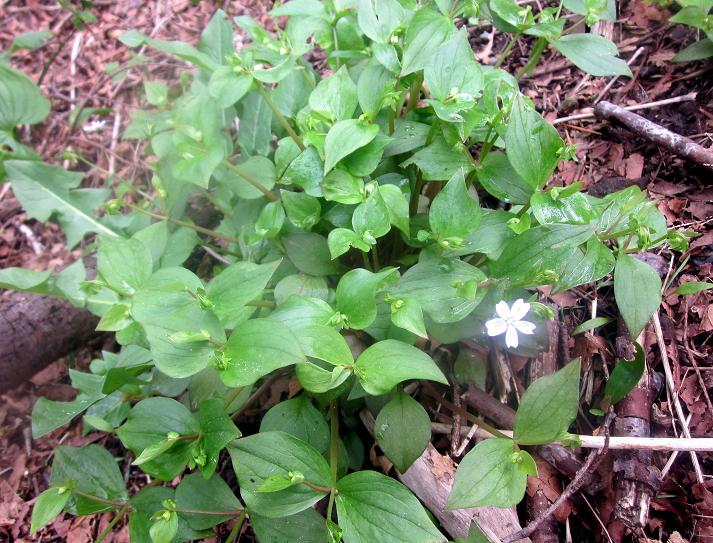 It wasn’t until I stumbled across a post on the brilliant (and Westcoast!) First Ways blog that it all made sense. The plant I was looking at was Siberian Miner’s Lettuce (also aka: Spring Beauty, Indian Lettuce, etc.) a variety of the same plant found in Northern North America and (as you could guess from the name) parts of Russia. It’s just as edible as its Southern cousin, but rocks the reddish stem and slightly different leaf pattern. A good breakdown of the differences between the two varieties can be found over at Oregon Wild.
It wasn’t until I stumbled across a post on the brilliant (and Westcoast!) First Ways blog that it all made sense. The plant I was looking at was Siberian Miner’s Lettuce (also aka: Spring Beauty, Indian Lettuce, etc.) a variety of the same plant found in Northern North America and (as you could guess from the name) parts of Russia. It’s just as edible as its Southern cousin, but rocks the reddish stem and slightly different leaf pattern. A good breakdown of the differences between the two varieties can be found over at Oregon Wild.
As an interesting side-note: It turns out that Toni had already hit up that First Ways post a year ago asking the exact same questions that were ricocheting around in my head. I should have more trust in my Obi-Wan.
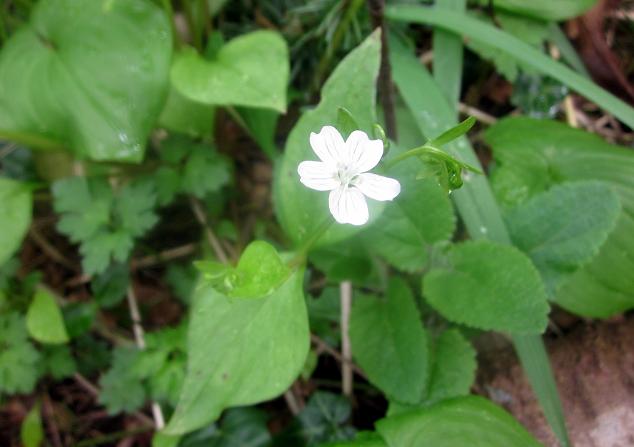 Another dead giveaway that my lettuce is of the Siberian variety is the candy-pink streaks on the tiny, five-pedaled white flowers. These can stain the flowers completely pink in the early summer, when the flowers are out and about.
Another dead giveaway that my lettuce is of the Siberian variety is the candy-pink streaks on the tiny, five-pedaled white flowers. These can stain the flowers completely pink in the early summer, when the flowers are out and about.
Miner’s lettuce is one of those plants that are easier to find long after they’re at their best flavour-wise. During the early spring (usually early-April around here) when the tender young leaves of the plant are only a couple inches long is the best time to pick ‘em. Once May rolls around and the stalks are longer and bitter the flowers proliferate and you can spot big clumps of them easily. They look like tiny stars reflected in a vast green ocean. Take note of where they are and come back next spring!
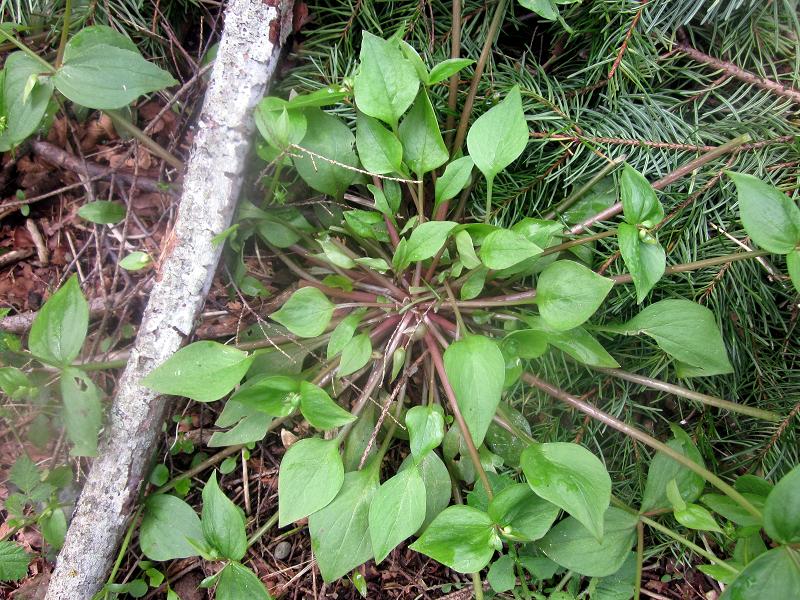 According to legend (my favourite way to start any sentence) miner’s lettuce got its name thanks to the “Miner 49s” of the California gold rush who ate this plant to stave off scurvy. This makes sense, considering the massive amount of Vitamin C found in the plant in its raw form. Native people of both the south and northwest coasts had a long tradition of using this plant as a medicinal food long before the gold diggers got here, but the name stuck.
According to legend (my favourite way to start any sentence) miner’s lettuce got its name thanks to the “Miner 49s” of the California gold rush who ate this plant to stave off scurvy. This makes sense, considering the massive amount of Vitamin C found in the plant in its raw form. Native people of both the south and northwest coasts had a long tradition of using this plant as a medicinal food long before the gold diggers got here, but the name stuck.
That makes miner’s lettuce ‘kinda special, as Hank Shaw from Hunter|Angler|Gardener|Cook pointed out. This isn’t some transplant from Europe like the Himalayan Blackberry or the Dandelion! Native people we’re foraging for this plant since time immemorial. This is an actual 100% native North American plant! It stands shoulder-to-shoulder with Salmonberries and Eelgrass in the pantheon of first nations food.
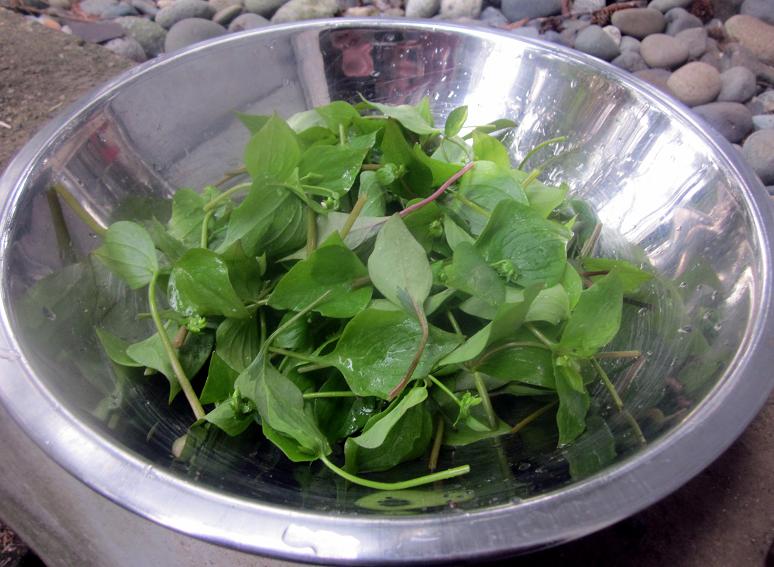 Whatever variety of miner’s lettuce you can find, they’re all delicious! The leaves are juicy and crunchy like bok choy or chicory and have a pleasant Romaine lettuce-kinda taste: Half-buttery and half-bitter with an aftertaste similar in sourness to lemon peel or sorrel (another herb I’ve been learning a lot about this month). I find they lose a lot of these highly desirable characteristics once they’ve been cooked, so I avoid the ‘ol “whatever you can do with spinach…” mindset in this particular case.
Whatever variety of miner’s lettuce you can find, they’re all delicious! The leaves are juicy and crunchy like bok choy or chicory and have a pleasant Romaine lettuce-kinda taste: Half-buttery and half-bitter with an aftertaste similar in sourness to lemon peel or sorrel (another herb I’ve been learning a lot about this month). I find they lose a lot of these highly desirable characteristics once they’ve been cooked, so I avoid the ‘ol “whatever you can do with spinach…” mindset in this particular case.
I picked a small plastic shopping bag full of miner’s lettuce this last weekend (a little late, but hey! I had to be sure what I was eating!) and tossed ‘em with some dandelion and arugula in a sweet cranberry-balsamic vinaigrette. It was a wonderful little side-salad that paid homage to all the green majesty just outside my window.
Just wanted to clarify something.
The flowers of Siberian Miner’s Lettuce are white with with little red stamens, not solid pink. There is another plant (which I have yet to identify) that grows in and around the miner’s lettuce that has little pink five-pointed flowers and vastly different-looking leaves.
I’m not sure I made that clear enough.
Happy foraging!
I tried to get to the first ways blog but there was a weird run-around insisting that I install an “extension” or something. What is that about?
Whoops, that link is dead as dickens! Looks like Frist Ways doesn’t exist any more… Shame, there’s not may foraging blogs left now. Thanks for letting us know Kari!